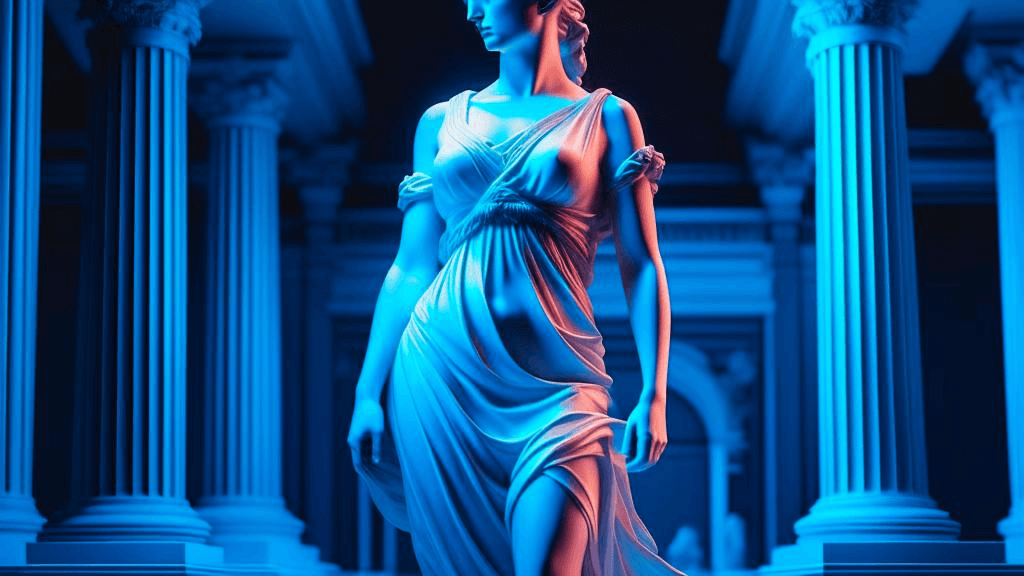Legacy & Innovation: Where Tradition Meets Modernity in Art

The world of art is a mesmerizing dance between the echoes of tradition and the bold steps of modernity. It is a realm where the classical harmonizes with the contemporary, and where the past informs the present, often in surprising and profound ways.
Imagine standing before Leonardo da Vinci's "Mona Lisa." It is a masterpiece that encapsulates centuries of artistic tradition, showcasing da Vinci's mastery of technique and his deep understanding of classical aesthetics. The enigmatic smile and the sfumato technique make it a timeless icon. Yet, hidden within the layers of paint, one can discern the threads of classical heritage.
Yet, move forward in time to the 20th century, and you encounter the works of Pablo Picasso. Picasso's "Les Demoiselles d'Avignon" shattered conventional notions of form and perspective. It was a radical departure from tradition, signaling the birth of Cubism and modern art. In this powerful composition, Picasso laid the groundwork for an artistic revolution.
The story of art is replete with such moments of intersection, where tradition and modernity collide and coalesce. Take the Italian Renaissance, for instance. It was a revival of classical ideals, where artists like Botticelli and Michelangelo drew inspiration from ancient Greek and Roman art. The result was a breathtaking fusion of classical principles with contemporary innovation. Botticelli's "The Birth of Venus" and Michelangelo's "David" are luminous examples of this harmonious marriage.
Fast forward to the present day, and you find artists like Ai Weiwei, who infuses his works with traditional Chinese motifs while addressing contemporary sociopolitical issues. His "Dropping a Han Dynasty Urn" challenges the very concept of cultural heritage in a rapidly changing world. Weiwei's audacious act of dropping and shattering an ancient urn underscores the tension between preserving the past and embracing the future.
The interplay between tradition and modernity is not confined to specific movements or artists; it is woven into the very fabric of art. Consider the enduring fascination with portraiture. From the solemn visages of ancient pharaohs to the evocative self-portraits of Frida Kahlo, portraiture has remained a vital genre throughout art history. Today, contemporary artists continue to breathe new life into this tradition, exploring identity, representation, and the human psyche.
Photography, born in the 19th century, straddles the realms of tradition and modernity. It emerged as a technological marvel, capturing reality with precision and immediacy. Yet, photographers like Ansel Adams and Dorothea Lange harnessed the medium to document the American landscape and the human condition during the Great Depression. Photography became a powerful means of storytelling, a technique that extended beyond painting.
The fusion of tradition and modernity is not solely a visual endeavor. Music, too, bears witness to this dynamic interplay. From the classical compositions of Beethoven to the experimental soundscapes of John Cage, music traverses the realms of tradition and innovation. Contemporary composers like Philip Glass challenge traditional notions of harmony and structure, composing minimalist masterpieces that resonate with modern sensibilities.
Literature, with its timeless tales and evolving forms, showcases a similar dance. Classic literature, from the works of Shakespeare to Tolstoy, continues to captivate readers across generations. Yet, modern authors like Haruki Murakami and Chimamanda Ngozi Adichie bring fresh perspectives and narratives that speak to the complexities of our contemporary world. It is a testament to the enduring power of storytelling, where tradition meets modernity with every turn of the page.
In the realm of architecture, the juxtaposition of old and new is often striking. Historic buildings are preserved as living monuments to the past, while innovative architects design structures that push the boundaries of design and engineering. The Guggenheim Museum in Bilbao, designed by Frank Gehry, stands as an iconic example of architectural innovation, where modernity complements the surrounding historic cityscape.
The world of fashion, too, embodies the tension between tradition and modernity. Designers draw inspiration from centuries-old techniques and textiles, infusing them with contemporary twists. The traditional kimono finds new life on the fashion runways of Tokyo, while haute couture blends age-old craftsmanship with cutting-edge design.
In the realm of film, the cinematic canon is a testament to the evolution of storytelling and technology. The silent films of Charlie Chaplin and Buster Keaton gave way to the era of Hollywood classics. Today, filmmakers like Christopher Nolan and Denis Villeneuve employ state-of-the-art technology to create immersive cinematic experiences that push the boundaries of storytelling.
The interplay between tradition and modernity is not limited to high art; it permeates our everyday lives. It is present in the fusion cuisine that marries diverse culinary traditions, in the architecture of our cities, in the fashion choices we make, and in the music that fills our playlists.
As we navigate this dynamic landscape of art and culture, we are reminded that tradition and modernity are not opposing forces. Instead, they are complementary threads in the rich tapestry of human creativity. It is in the intermingling of the old and the new that we find innovation, inspiration, and a deeper understanding of the world around us.
In this ever-evolving dance between legacy and innovation, artists, creators, and visionaries continue to bridge the past and the present, forging new paths and shaping the future of art and culture. It is a testament to the enduring resonance of tradition and the limitless possibilities of modernity, where the echoes of the past inform the bold steps of the future.